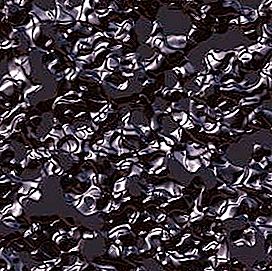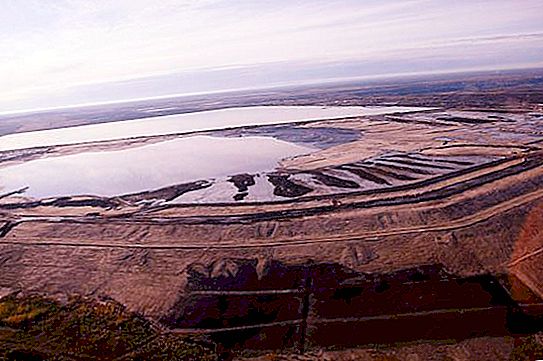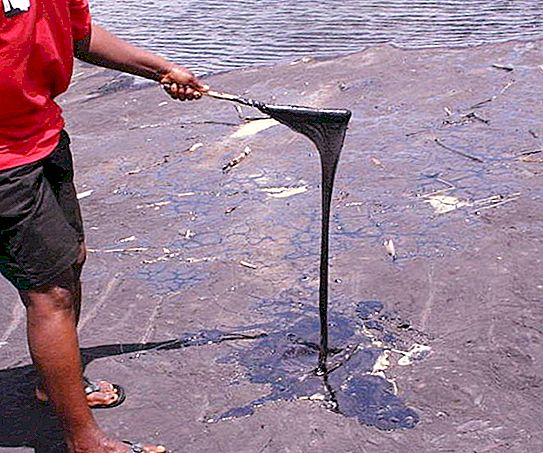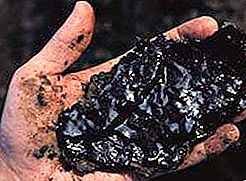Materials of various composition and properties are used to create a high-quality and reliable pavement. One of them is tar. What kind of substance it is, what properties it has and where it is used is very well known primarily to builders and road workers. People of the older generation, whose childhood was spent in the Soviet Union, probably remember what their first chewing gum - tar was. Outwardly, it is a resinous substance formed after the processing of petroleum products, having a viscous structure and a pronounced black color. Tar yield is from 8 to 45 percent by weight of oil.

Tar - what is it
The basis of this substance is oil products, so the composition of the tar is very similar to the oil fractions. Mandatory components are:
- Petroleum resins, consisting of complex hydrocarbons and giving the tar viscosity and ductility.
- Asphaltenes are solids that increase temperature stability.
- Asphaltic acids and their anhydrides having a resinous consistency and related to polynaphthenic acids.
- Also a mandatory component of the tar is a high content of metal impurities present in oil.
Tar properties
They depend mainly on the properties of oil, as well as the technologies used in its processing. The nature of the oil fractions also affects some characteristics of the tar, such as density, melting point and flash point, coking ability. Better tar is obtained from heavy tarry oil and makes up about 8% of its mass.
Tar application
In various industries, tar is used. That this is an indispensable component for the production of road and building bitumen, perhaps, is known to everyone.

But besides this, tar is also necessary in the manufacture of motor fuel, fuel oil and combustible gases. In the construction and rubber industries, it is used as a softener. Tars with a high resin content can be processed into diesel using the hydrogenation and cracking methods.
In order to remove tarry asphaltene components and polycyclic hydrocarbons, which have a low viscosity index and a high degree of coking ability, tar deasphalting is used. As a rule, propane serves as a solvent. But along with it, when it is required to obtain raw materials from hydrocracking or catalytic cracking plants, pentane and butane can be used. Sometimes a two-stage deasphalting is carried out when the asphalt obtained in the first stage releases a more viscous component - deasphalting 2.
When carrying out roadwork, the tar is brought in solid form, and immediately before use it is heated to a liquid state.
Secondary resources
In the production of detergents, light oils, paraffin refining, and other technological processes where sulfuric acid is used as a reagent, a by-product called acid tar is formed. This is a valuable secondary resource in the form of a black resinous mass containing mainly sulfuric acid and organic compounds. A ton of acid tar allows you to get 600 kg of liquid fuel, 230 kg of gypsum, 110 kg of coke or 60 kg of gaseous hydrocarbons.
The danger of acid tars for the environment
Despite all its value as a raw material for bitumen binders, sour tar is also one of the most serious factors that pose a threat to the environment.

That this substance is indeed a source of danger to the plant and animal world, it is easy to imagine, if we recall its composition - resinous substances and free sulfuric acid, the content of which can be up to 70% of the total mass.
A danger is also a method of storing acid tars. Due to the fact that today there are no rational methods for their disposal, this waste simply dumps into storage ponds, which sometimes occupy quite significant areas. As a result of redox processes that spontaneously occur on the surface of these storages, a large amount of sulfur dioxide is released. After heavy rains or snowmelt in spring, acidic waters flowing from crowded ponds acidify the soil and groundwater.

All this negatively affects the environmental situation near the location of such ponds, negatively affects the health of people living in the adjacent territory. Millions of tons of acid tar are stored in open storage ponds in Russia. Almost all refineries have such waste. In the Nizhny Novgorod Region alone, more than 250 tons of them were accumulated.





